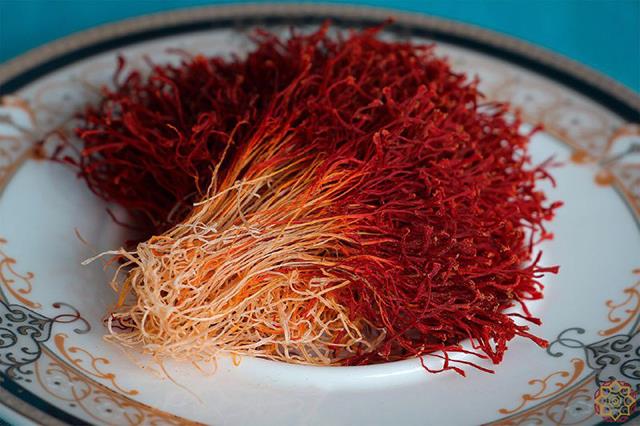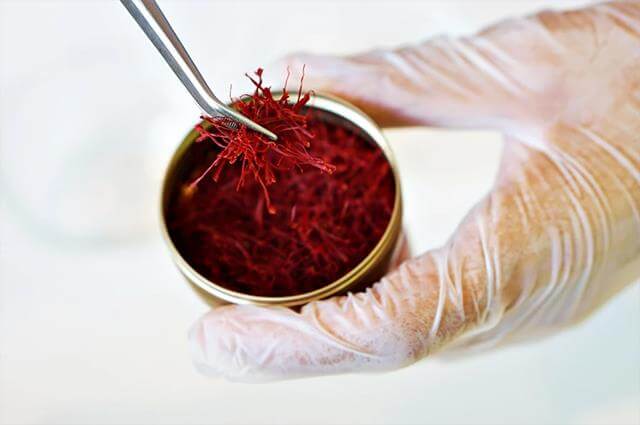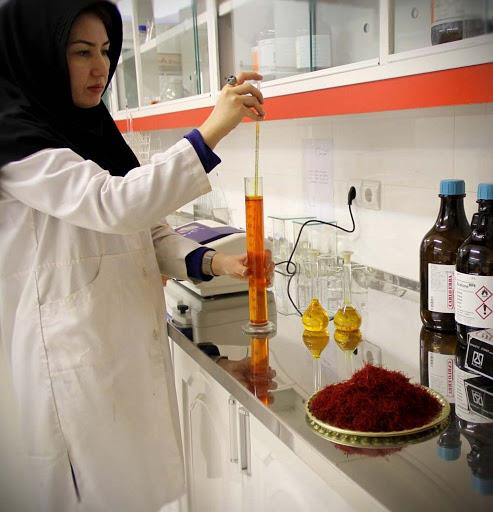
Quality takes precedence in the international market, and to achieve success and compete with the most advanced countries, one must not only produce this valuable product, but deliver it to other countries and consumers with its quality intact. Knowledge of the important standards and factors can therefore greatly help in offering a quality product, and different countries have various degrees of knowledge, experience and technical know-how in saffron standard analysis.
Saffron quality is analyzed in laboratories according to domestic and international standards to ensure that high-quality saffron is delivered to the costumer. Knowledge of fake saffron can help better assess its quality, which is why the possible fraud cases with this product are reviewed first.
Various Ways to Fake Saffron and figure out the saffron standard
The topic of saffron fraud and abuse led to the codification of the Safranschou code, which stated that sellers would be punished by imprisonment, paying compensation, or execution. Overt fraud decreased over time and took on a different form. These fraud methods include the following:
Fraud in Bunch Saffron
Fraud in bunch saffron could be done by mixing low-quality strands or other plants.
Fraud in Powder Saffron
Most frauds occur with powdered saffron as its volume can be increased by adding extraneous substances. For example, powdered saffron could be mixed with similar spices, such as turmeric.
Keeping Saffron Moist
Another fraudulent approach to inflate prices is to not completely dry the saffron. Wet saffron weighs more, which increases its price.

Measuring Saffron Quality According to National and International Standards
The International Saffron Quality Standard
Saffron can be used as a spice without limitations. In order to use pure and healthy saffron, however, necessary inspections should ensure that organic products are offered to the global market in perfect health. According to acts approved in 1994 by the International Organization of Standardization, saffron threads or powder should meet the following standards.
Iranian saffron undergoes quality checks from various aspects, including physical, chemical, microbial, fungal, and other characteristics. Most of these investigations are intended for compliance with the international ISO 3632 standard that is adopted by all countries.
Internationally, products meet the ISO 3632, food safety, and the FSSC HACCP standards to ensure saffron quality, which are universal criteria for all countries.
1. Using the Original Saffron Plant
Firstly, saffron should be produced from the original saffron plant belonging to the Iridaceae family and the crocus sativus species.
Pure and high-quality saffron meets the requirements of the ISO 3632 standards and has no extraneous substances. This code was first published in 1980 and its latest revision was released in 2011, which investigates the quality and authenticity of saffron products.
2. Saffron Flower Health
Saffron flower consists of a peduncle, perianth, pistil, ovary, style, stigma, stamen, and filament.
3. The Size and Color of Saffron’s Internal Components
The stigma consists of three branches of approximately 3 cm at the end of the style and is bright red, while the style is white. The three stigmas are free and joined at the style.
These standards are used to ensure saffron quality. Maintaining the durability, color, and odor of saffron is extremely important. Without these three characteristics, saffron lacks the necessary quality and is arguably worthless.
4. Saffron Impurities
The extraneous parts of saffron should not exceed 10%.
5. Sediments and Aromatic Compounds in Saffron
Saffron’s sediments and aromatic compounds must not exceed 14%.
6. Dust and Ash
The dust and ash content of saffron should not exceed 1%.
Saffron quality analysis in countries of origin is defined according to international criteria. Following these rules determines compliance with the food safety management system. Many of these quality analysis standards are codified to meet the customers’ demand and offer high-quality products. Various investigation take place at different times to check saffron quality. Analysis of dried saffron quality encompasses powdered and bunch saffron.
The saffron offered in the market that is inspected by this organization can be trusted for its quality. The standards presented by this organization are meant to protect consumers’ universal rights by analyzing saffron quality.

Saffron Standards in Iran
The Institute of Standards and Industrial Research of Iran determines and measures saffron quality. The preliminary steps for establishing the ISIRI were taken in 1925, and the department for monitoring exported and imported product quality was established in 1957. This institute began its operation in 1960 within the specified framework, and also became a member of the International Organization for Standards (ISO).
This office has the important responsibility of issuing certifications for imported and exported products, and many research institutes and laboratories are working in this organization with advanced equipment and research groups.
The standards and tests used for analyzing saffron quality were codified in 1966, the proposal was again evaluated and adopted in 1991, and the latest food and agricultural product standards were adopted in 2004. The Iranian Saffron Quality Organization operates under the title of the National Saffron Standard.
This organization’s main goal is to prevent fraud and offer high-quality saffron. Firstly, it uses quality analysis to determine domestic and national use; and secondly, saffron quality is important to countries of origin in the global market and introduces Iran’s saffron to build international trust.
This organization has a department for analyzing saffron quality, and the Iranian standard emblem indicates commitment by the producer to the rules and regulations set by the ISIRI.
In order to ensure the saffron produced in Iran is of high-quality, producers often adopt European and international standards for their products.
At the same time, the quality of pure Iranian saffron is much higher than global counterparts and is in a class of its own, since the criteria that are important for measuring this product’s quality in pure form (including taste and odor) are present in Iranian products. Bacteria, fungi, and extraneous substances, however, degrade the final product’s quality over time.
List of National Saffron Standards
Specialized laboratories related to testing and analyzing the quality of Iranian saffron are at a very high technical level. This process is a self-evident requirement for progress and competition in the global market. Since all the tasks beginning with planting, growing and harvesting to packaging are yet to be fully specialized, the quality of Iranian saffron offered in the international markets sometimes suffers.
- National Standard 259-1: The national 259-1 standard titled saffron and its characteristics (including specifications of packaging, marking, and sampling) in Iran includes packaging features such as marking and sampling. One of the most important points considered by the international market is the ability to trace and refer to the original manufacturer. If the product can be traced, importing companies and countries can obtain health information and production dates and make new requests to the producer, which will by itself build trust for Iranian saffron.
- National Standard 259-2: National standard 259-2 titled saffron and the standard testing methodology of Iran involves evaluating the amount of style in the stigma, saffron moisture, soluble extract in cold water, extraneous substances related to the plant, the extraction environment, and identifying additive colors. It also measures saffron bitterness and odor as well as saffron dyeing.
- National Standard 1197: Related to measuring saffron ash
- National Standard 3659: Saffron sampling method
- National Standard 2198: Enterococci look up and order
- National Standard 5689: Microbiological quality of surfaces
- National Standard 4557: The procedure for using the risk analysis and critical control points
- National Standard 2946: Microbial test for the maximum value of Escherichia coli
- National Standard 2-10899: Measuring saffron mold and yeast (grams)
- National Standard 9432: The universal method for counting sulfur-producing bacteria in anaerobic environments
Conclusion
Since most bacterial, fungal and microbial contamination of saffron occur after packaging on the way to the destination, adequate, healthy and standard saffron packaging will maintain its quality.
These tests are conducted in a laboratory environment on numerous samples, the values are compared with authorized global samples, and the standard emblem is ultimately given to the Iranian saffron that meet the standards.
This post is also available in: العربية (Arabic)


